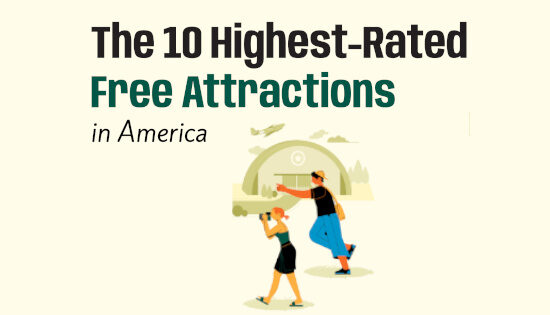IN OTHER NEWS – A new study finds that Georgia has the second-largest difference in women and men classed as obese.
Release:
- Georgia has been identified as the state reporting the second-largest difference in the percentage of women and men living there who are classed as obese.
- In 36 out of 50 states (72%), a larger proportion of women have a BMI of 30.0 or higher, compared to men.
- 34.1% of women in the U.S. are classed as obese compared to 32.6% of men.
New research has named whether men or women are battling with obesity the most in each state, with it revealed as being more of a concern for women in most states.
The study, conducted by the free fitness app Flex AI, analyzed data from America’s Health Rankings on the percentage of adult women and men with a body mass index of 30.0 or higher based on reported height and weight, to identify who it is a bigger issue for.
The American obesity epidemic has been growing over the past decade, as the country increasingly struggles with weight management.
Obesity can lead to a multitude of serious medical conditions, such as heart disease and stroke, which can impact life expectancy.
According to the findings, this is more of a problem among women, with 36 out 50 states (72%) having a higher percentage of its adult women population classed as obese, compared to only 12 states having a larger proportion of its men with a BMI of 30.0 or above.
Out of the states where women are facing higher obesity rates, Tennessee has the most significant difference between women and men. 42.7% of women are classed as obese compared to 35.1% of men.
Georgia is the second state with the highest difference between the proportion of women and men living in the state considered obese, with 39.9% and 34.1%, respectively.
In third is Delaware, with 40.5% of women reporting a BMI of 30.0 or higher compared to 35.3% of men.
The data suggests that in these states, it could be beneficial to focus slightly more on targeting women with measurements designed to help deal with the obesity crisis. This wouldn’t be as necessary in some states, such as New Hampshire, Washington and Nebraska, as the difference in the percentages is minimal.
The states with a higher percentage of women classed as obese
State Percentage of adults with a body mass index of 30.0 or higher based on reported height and weight – male Percentage of adults with a body mass index of 30.0 or higher based on reported height and weight – female Difference in percentage points between men and women Tennessee 35.1% 42.7% 7.6 Georgia 34.1% 39.9% 5.8 Delaware 35.3% 40.5% 5 Louisiana 37.6% 42.5% 4.9 Mississippi 37% 41.9% 4.9 Alabama 35.8% 40.6% 4.8 Illinois 31% 35.7% 4.7 South Carolina 32.8% 37.2% 4.4 Arkansas 35.3% 39.5% 4.2 North Carolina 32.1% 36.1% 4 Nevada 31.9% 35.3% 3.4 Iowa 35.8% 39.1% 3.3 Oklahoma 38.4% 41.6% 3.2 Missouri 35.2% 37.6% 2.4 Texas 34.4% 36.7% 2.3 Michigan 33.4% 35.6% 2.2 Alaska 31.2% 33.3% 2.1 Indiana 36.6% 38.7% 2.1 Kansas 34.7% 36.8% 2.1 Rhode Island 29.8% 31.9% 2.1 Virginia 34.2% 36.30% 2.1 North Dakota 37% 39.00% 2 Pennsylvania 32.4% 34.30% 1.9 Ohio 37.2% 39.00% 1.8 Vermont 26% 27.70% 1.7 Arizona 32.7% 33.80% 1.1 Maine 32.6% 33.60% 1 Oregon 30.5% 31.40% 0.9 Montana 30.3% 30.80% 0.5 Connecticut 30.4% 30.80% 0.4 New York 29.9% 30.30% 0.4 South Dakota 36.6% 37.00% 0.4 Colorado 24.9% 25.20% 0.3 Nebraska 35.2% 35.40% 0.2 Washington 31.6% 31.80% 0.2 New Hampshire 30.2% 30.30% 0.1
In the states where the obesity rates are of higher concern for men, the difference is most significant in Maryland, with 31.5% of men in the state classed as obese, compared to only 24.8% of women.
In second is New Jersey, although the disparity between the percentages for men and women decreases considerably, with 30.7% of men living in the state reporting a BMI of 30.0 or above and 27.4% of the women.
Hawaii is third, with 27.1% of men considered obese and 24.6% of women.
This suggests that Maryland is the main state where perhaps weight loss and management initiatives should focus a bit more on men.
The states with a higher percentage of men classed as obese
State Percentage of adults with a body mass index of 30.0 or higher based on reported height and weight – male Percentage of adults with a body mass index of 30.0 or higher based on reported height and weight – female Difference between men and women Maryland 31.5% 24.8% 6.7 New Jersey 30.7% 27.4% 3.3 Hawaii 27.1% 24.6% 2.5 Kentucky 38.7% 36.7% 2 Minnesota 34.6% 32.6% 2 Florida 32.4% 30.8% 1.6 Massachusetts 28% 26.5% 1.5 Utah 31.7% 30.5% 1.2 West Virginia 41.6% 40.5% 1.1 Wisconsin 38% 37.3% 0.7 California 28.4% 27.7% 0.7 Idaho 33.4% 33% 0.4
New Mexico and Wyoming are the only two states where the obesity crisis affects men and women equally, as the percentages are identical at 32.4% and 34.2%, respectively.
Commenting on the findings, Amin Niri, CEO of Flex AI says:
“The US is one of the most obese countries in the world, with its ranking significantly higher when focusing on high-income countries.
“While there are numerous factors which play a part in this, the large portion sizes consumed by many Americans and inactive lifestyles are largely responsible.
“The combination of a higher calorie intake combined with less movement to burn through the excess inevitably results in weight gain.
“It’s interesting to see that this may be affecting women more than men. In the US as a whole, 34.1% of women are classed as obese compared to 32.6% of men.
“It is recommended adults engage in moderate aerobic activity for at least 150 minutes a week, or vigorous aerobic activity for at least 75 minutes.
“Small changes in your routine can help you achieve this, without having to drastically alter your lifestyle. For example, by doing a 20-minute workout before getting ready for the day or going for walk after you finish work when the weather is nice.”









